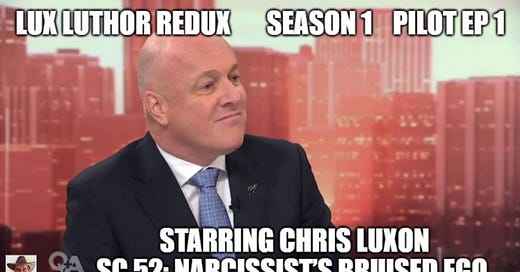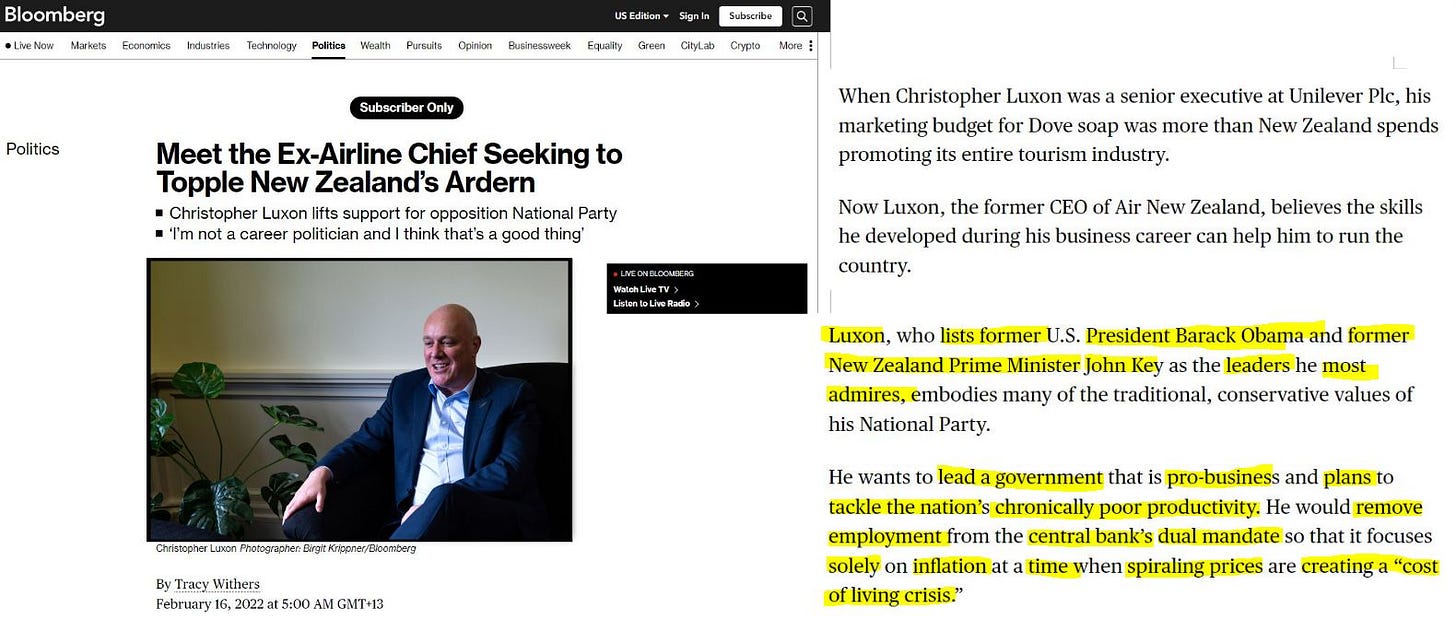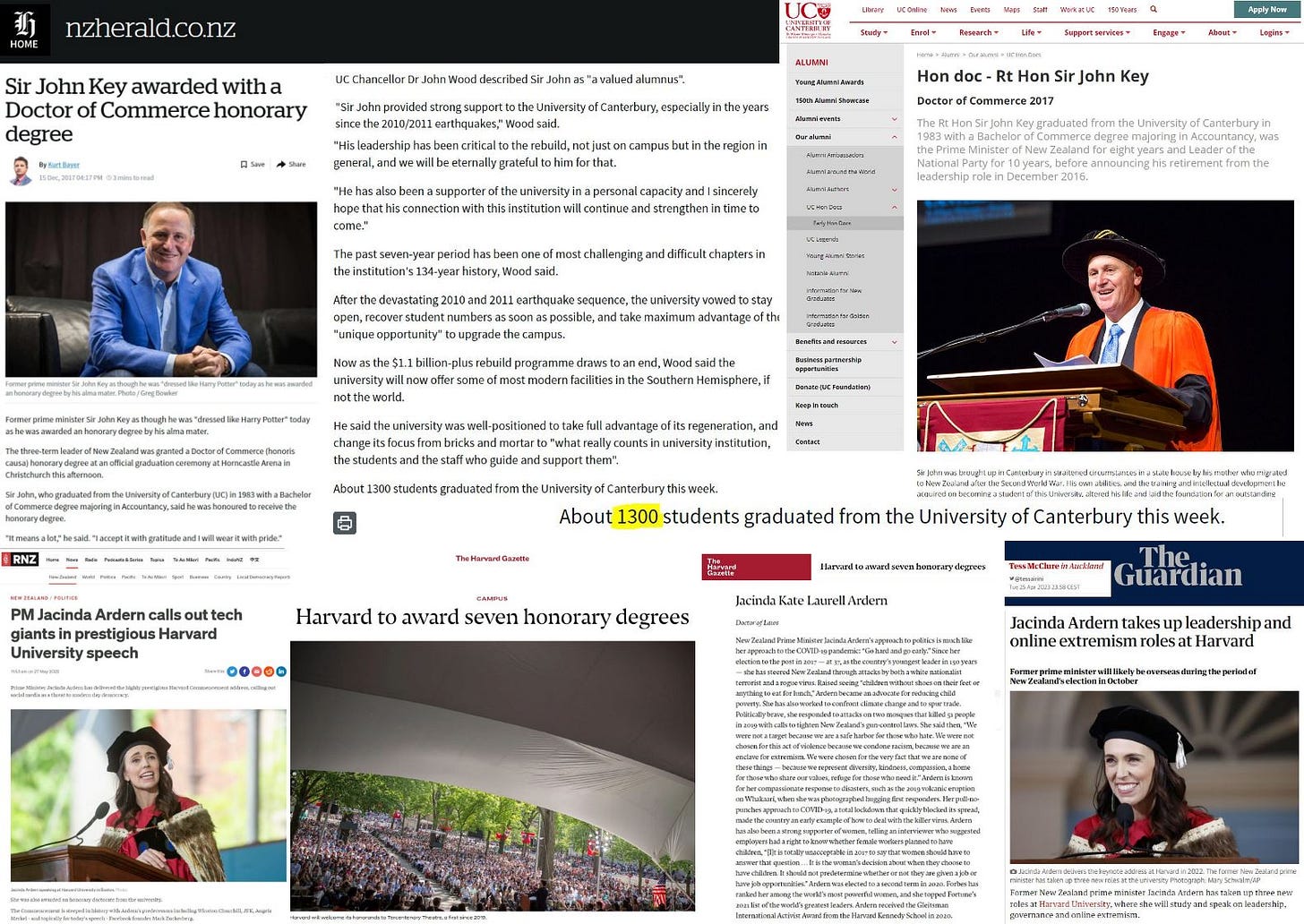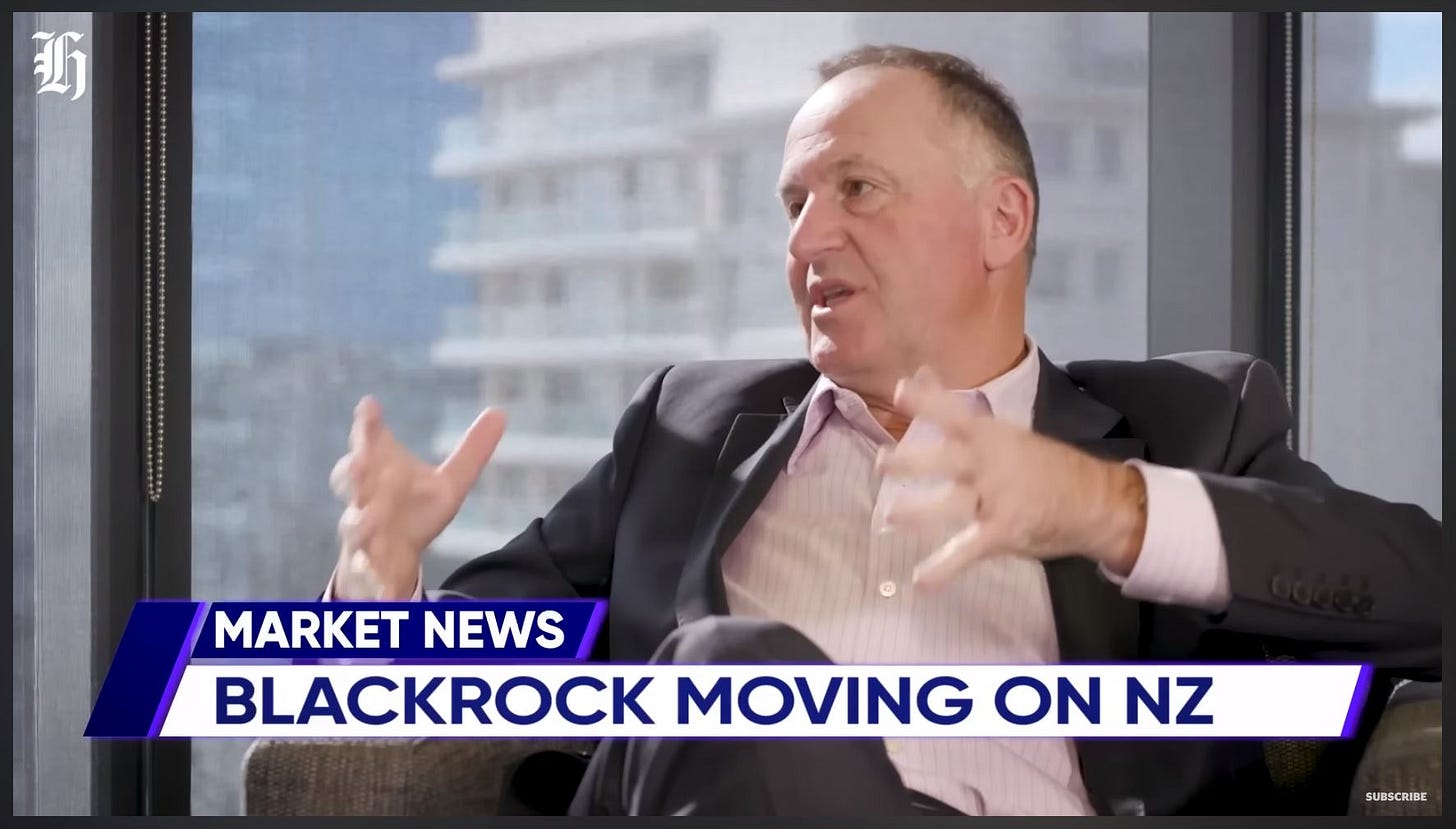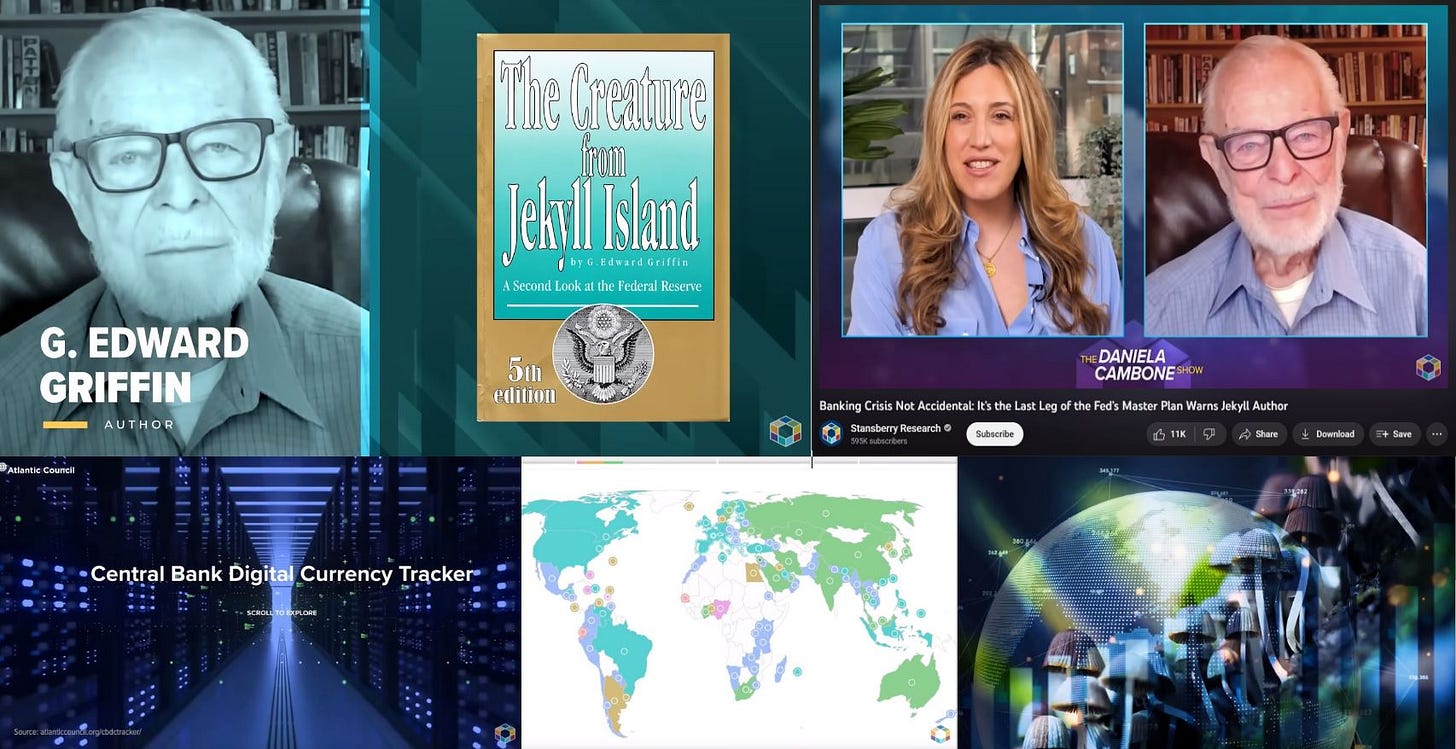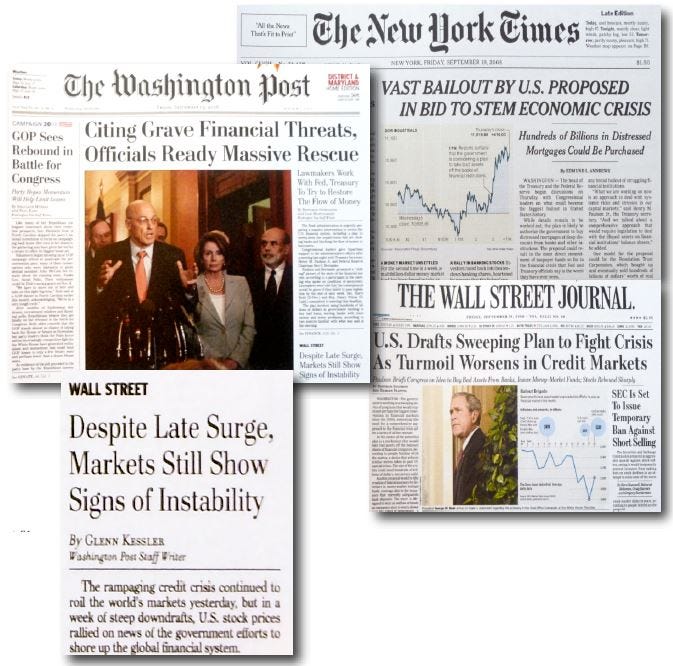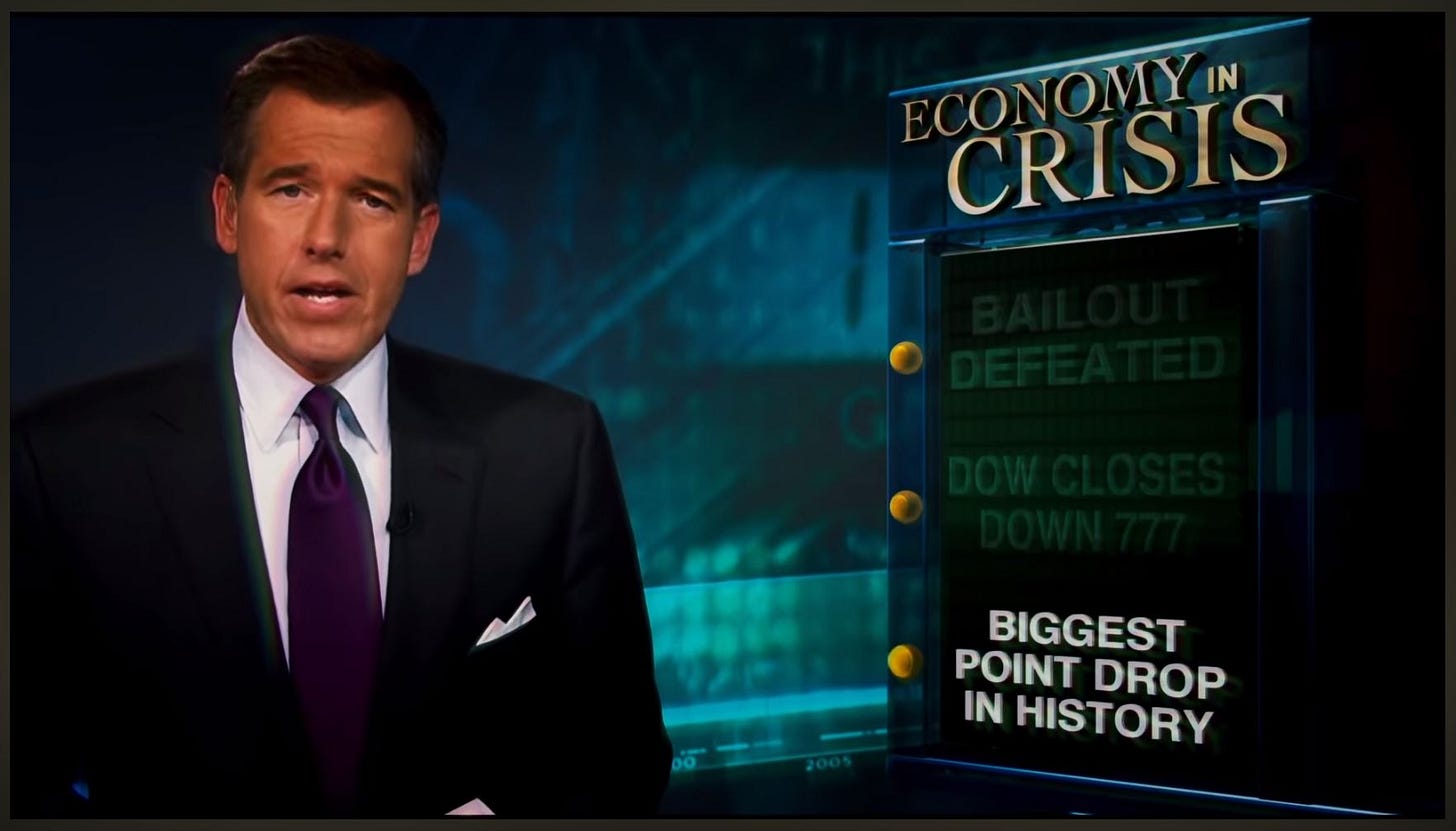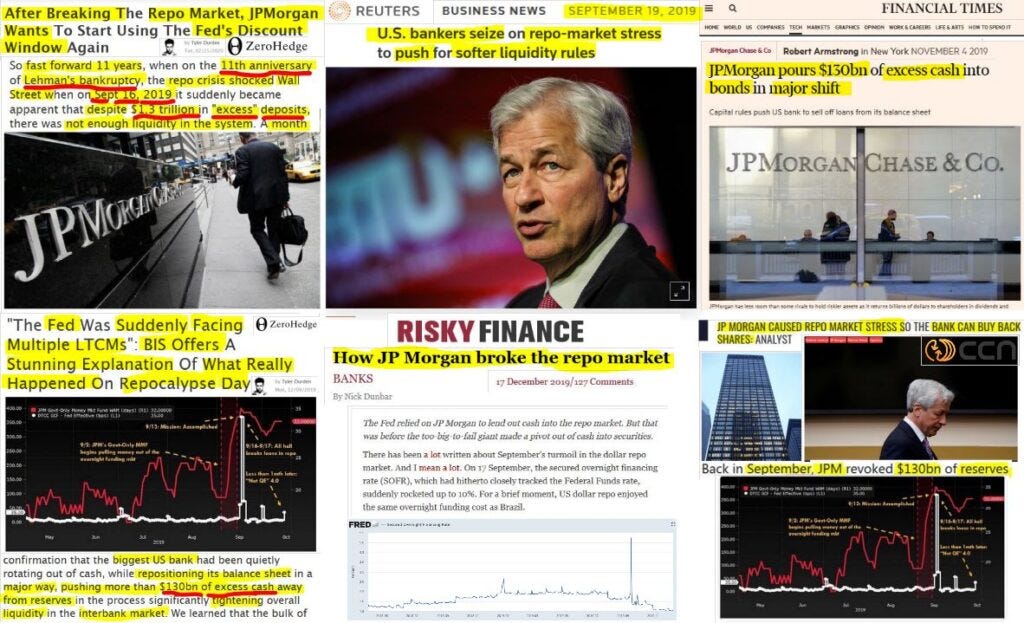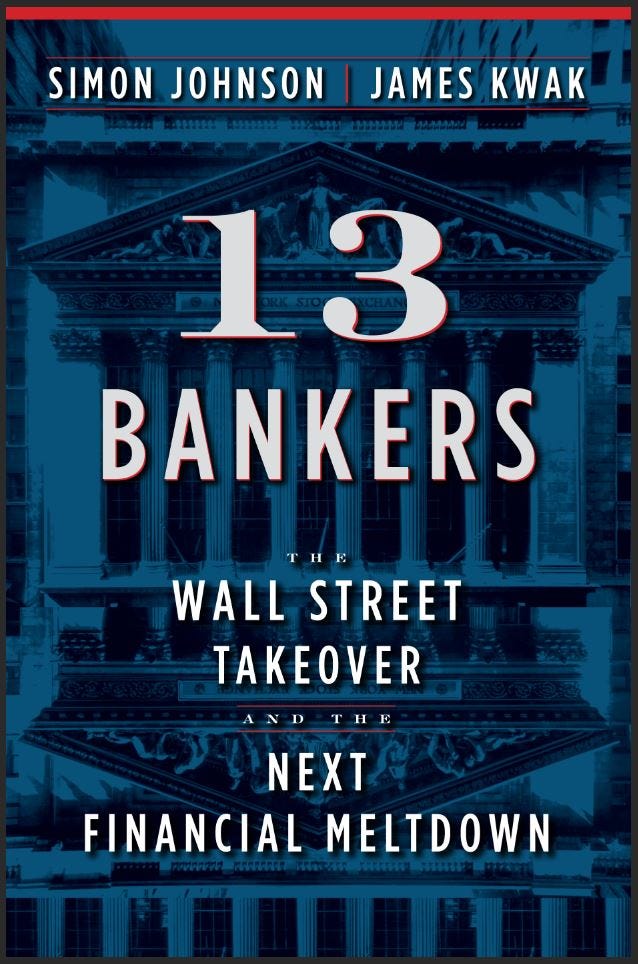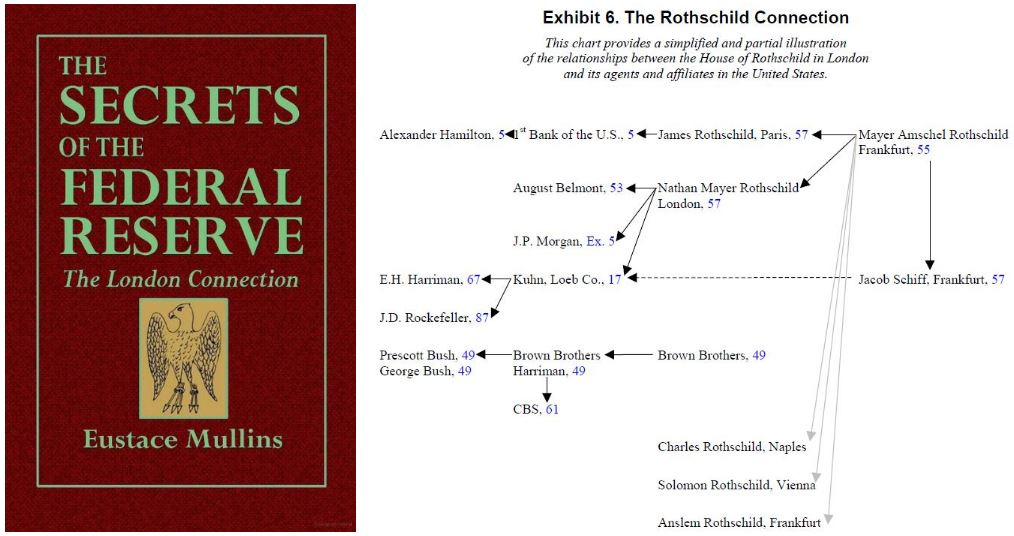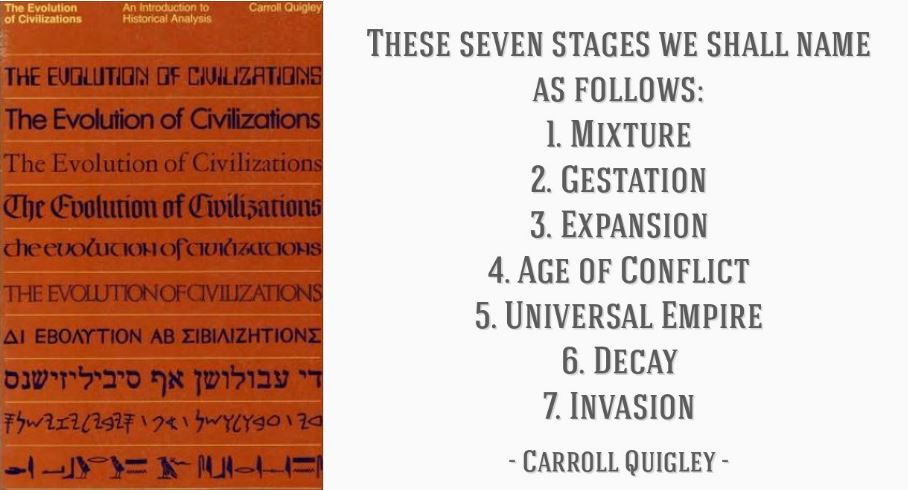Lux Luthor — Part 3: Monopoly Board
The New Zealand Edition with Social Impact Bonds to Manage Crises!
In Part 3 “Monopoly Board”, the National Party’s stealthy social engineering agenda is teased out through a re-examination of Chris Luxon’s rhetoric on how he’d fix the nation if he were Prime Minister. The reader is steered to a proposed ‘Social Investment Fund’, stashed in the bowels of National’s website, to show the structural racketeering put in play by institutions, individuals, and interests with a history of engineering crises and controlling crisis rituals to deploy ‘solutions’.
The Luxon National Government intends to spearhead the roll out of a social impact bond market, that has been piloted by Crown entities and have been trialled elsewhere, and were developed by global banks — such as Goldman Sachs, Merrill Lynch, Morgan Stanley, Bank of America, and JP Morgan Chase — who were among the culprits that caused the Global Financial Crisis of 2007-2008. The social impact bond market is designed to harvest the digital data of humans that receive any kind of public services, program assistance, or welfare payments in order to manage the impacts caused by the global oligarchy (without admitting their culpability).
Ironically, Mr Luxon claims to be passionate about combating modern slavery. Yet, he doesn’t appear to have studied the structural racketeering practised by banking cartels. The dirty secret of banking is that banks across the world operate as market monopolizing cartels to maintain an artificial scarcity of cash, while supplying an abundance of manufactured credit. Conspicuously, the looming Central Bank Digital Currencies (CBDCs) is one of the elephants in the election debate room.
With CBDCs under development, central banks are poised to be at the center of a financial transaction control grid, with programmable money as a means of social control. Critics foresee that such digital money will be used as a medium to enforce social credit scoring, a carbon credit and taxation system, and block-chained social impact bond contracts for public services, program assistance, or welfare payments.
Indeed, as former Māori Television editor, Steve ‘Snoopman’ Edwards pointed out in part 1: “Operation Overwealth”, the computing chip is not only the new instrument of empire expansion. The chip is also set to collectivize all previous instruments of expansion, including slavery, feudalism, and credit creation, in the ongoing Third Hundred Years’ War — that began as a struggle over the control of oil in 1899.
Indeed, in 2020, a central banker explained at an annual meeting of the IMF-World Bank the key advantage that CBDC’s had over cash, was the capacity to have absolute control over how people used money since the digital currency would be programmable. This virtual meeting took place on the 33rd anniversary of the 1987 Wall Street Crash. The totalitarian ‘solution’ to the next crash was signaled.
Crucially Luxon’s mentor, former Prime Minister John Key, mentioned in the escalation of public debt borrowing that occurred while the Corona Tumble Weed turned NZ’s cities into ghost towns (without stating the matter so colorfully), was essentially on a national scale what his government did for Christchurch following the earthquakes of 4 September 2010 and 22 February 2011. Key, like Jacinda Ardern, are narcissists who gas-lit New Zealanders during these crises that they oversaw, and were both rewarded with honorary doctorates for their machinations.
The Christchurch Rebuild meta-data, revealed that big corporate interests — foreign and domestic — worked hand-in-glove with central and local government as a hidden ‘brotherhood’, signalling their cooperation to collude by embedding the number 13 and its multiples in key numbers, as game theory could predict.
The deeper context examined here reveals that a reset of critical structural forces such as technological innovations was really about the struggles, tensions and impacts of organizing systems, to determine whether access to the world’s valued resources is restricted or open. Thus, epic ‘chess games’ are inflicted to re-set the arc of history. As such, a brand manager-turned-political lawmaker, with a narcissistic ego, will be a useful idiot for the global power élite if he becomes prime minister.
» A Private Political Bank – Social Impact Bond Markets
As Leader of New Zealand’s National Party, Christopher Luxon, has proposed a number of social engineering policies that indicate the underlying financing will be sourced from an emerging impact bond market. Social impact bond have been piloted.
However, during this election year Luxon has virtually consigned social impact bonds as a policy ‘solution’ to ‘elephant in the room’ status. Ironically, he mentioned targeted “powerful” targeted social investment for 15 to 17 year olds to prevent youth crime military leaders and community organizations to deal with addictions and other dysfunctions. But, because Luxon did not mention the term ‘social impact bonds’, most New Zealanders would no realize the mechanisms underpinning the policy.
The National Party proposes to initially fund the programmes through the Government Budget, setting up a Social Investment Fund. While National carefully avoided using the term social impact bonds, the Party signalled the “huge power in combining the forces of Government social investment experience with the capital and expertise of the philanthropic and charitable sector.” In other words, a bonanza for predatory billionaire foundations and their plethora of ‘NGOs’ seeking to profit off programs with easy to meet targets, while the systems of totalitarian techno-feudalism are built around Kiwis. Oligarchs thrive in crisis-ridden societies.
When Chris Luxon took over as Leader of New Zealand’s National Party, he signalled he wanted to follow Bill English’s “social investment approach”, as 1News reported 15 December 2021. As Minister of Finance in the Key National Coalition Government, Bill English was credited with spear-heading a number of social impact pilots.
Ironically, when the New Zealand Initiative published their 2015 policy paper entitled, “Investing for Success: Social Impact Bonds and the Future of Public Services”, the foreword was written by the chairman of the IHC Foundation, Sir Roderick Deane.
Ironic, because it signalled ‘pedigree’. In an earlier incarnation of himself, Dr. Roderick Deane, as Reserve Bank Deputy Governor, was complicit in the siege of the incoming Lange Labour Government, which took the form of an engineered currency crisis. Deane borrowed $600m over the phone from the World Bank and in a four day period, NZ borrowed $1.7 billion to prop up the currency. The currency crisis was coercive mechanism in which ‘currency speculators’ essentially posted ransom notes.

Deane claimed he acted to protect the integrity of the Reserve Bank. Evidently, the former Reserve Bank official believed Kiwis were intellectually handicapped.
In other words, after enjoining himself in the conspiracy to inflict a corporate heist of the economy in 1984, Sir Rod Deane wrote the foreword for a policy paper offering favored market-based solutions to the social impacts of economic warfare, that the think-tank’s forerunner think-tanks’ members were culpable for implementing.

In a February 2022 interview with Bloomberg Business, Luxon told the New York-based financial and economic publisher that he would revive the “social investment” approach championed by former National Finance Minister Bill English. As Bloomberg explained, the social investment approach “uses data to identify those most at risk of becoming expensive burdens on social services and aims to change their lives with early government intervention.” In short, it’s oligarchic social engineering.
Luxon’s key policy dubbed a ‘social investment approach’ was carefully crafted rhetoric to signal that a Luxon National Government intends to spearhead the ‘market’ roll out of a social impact bond market, that has been piloted by the Department of Internal Affairs, among other Crown entities. These pilot studies have been trialled elsewhere, and were developed by global banks such as Goldman Sachs, Merrill Lynch, Morgan Stanley, Bank of America, and JP Morgan Chase.
The English Government established the Social Investment Agency (SIA) in 2017, as a data driven ‘policy experiment’, and was renamed the Social Wellbeing Agency in 2020.
Whether it is a Pepsi National or Labour Cola-dominated plutocracy, every sector of society needs reform except the super-rich who govern as a civil oligarchy by stealth.
In April 2023, Luxon said National will cut student loans by $22,500 for nurses and midwives to study, if they enter a bonding scheme, requiring them to work in NZ for five years. It’s not clear if this bonded apprentice cohort is a social impact bond scheme. This idea received the support of the blog site, Daily Blog, since Martyn ‘Bomber’ Bradbury, claimed an incentive would retain those that taxpayers’ train.
Bradbury not only failed to consider the audacity of an aspirant to a technocratic plutocracy proposing reforms on any other sector than the civil oligarchy, and their loyal servants. The Daily Blogger also neglected to consider if Luxon was proposing a social impact bond market scheme on the other side of this tax-payer ledger.
The stealthy implementation of social impact bonds, if left unabated, will grow like a tapeworm throughout the bowels of the health system, regardless of the ‘Party Colors’.
Luxon has also stated his Party, if in Government, would be tough on gangs. In 2022, he voiced his enthusiasm for the Police to have a Strike Force Raptor-style gang unit.
Such a unit would have the capacity to make warrantless raids on gang premises to capture their illegal firearms, and be a permanent feature of policing in NZ. The rises in ram-raids, drive-by shootings, and violent offending incidents are a statistically predictable result of numerous plutocratic governments serving the civil oligarchy, the old leadership dying off and such gangs lacking the discipline of the Triads.
The aspirant for the Chief Minister post of New Zealand also wants to be able kick people out of state-owned Kiangaora Housing for bad behaviours. In an August 10 interview, Luxon claimed there have only been two evictions out of 10,000 complaints for unruly and anti-social behaviour over the last 14 months. Tame challenged Luxon, saying he was simply going to dump people elsewhere. Luxon appealed to fairness, but he finally admitted the community would be left with a homelessness problem.
While its valid that grown-ups need to live with consideration for their neighbours, is it not a bit rich for New Zealand’s civil oligarchy — and their loyal technocrats — to posture about decent standards of behaviour, when they are responsible for deepening NZ’s de-stabilization every decade since Kissinger inflicted the 1973-74 Oil Shock?
Curiously, Luxon has consigned social impact bonds to ‘elephant in the room’ status.
Returning to the Bloomberg article, Luxon was quoted in a subsection entitled, ‘Kiwi Dream’. Luxon said “You can’t just say to people who are in tough places just work harder and pull yourself up by your bootstraps,” he said. “I want to create a society of opportunity where irrespective of circumstances we can get you to the starting line, so that each five year old has a shot at whatever their version of the kiwi dream is.”
Luxon was describing a social impact bond market for children either from families that are either economically challenged, or from households where there are problems of domestic violence, addictions and poor education. In short, its social engineering.
The social impact bond market is designed to harvest the digital data of humans that receive any kinds of public services, program assistance, or welfare payments. The impact bond market works by pooling the harvested digital data of humans into blockchains, which are digital ledgers. Such bond markets are forged with crises.
Blockchains are cryptographically managed coded data that are transformed into digital assets and liabilities and transactions using public and private keys.
The impact bond market creates blockchains from a human being’s digital data, and each digital ledger of a person’s life is pooled into social impact bonds for investment.
In other words, humans, including children, are to be recast as pools of commoditized trackable data assets by impact bond markets — as Alison Hawver McDowell has written about extensively on her website, Wrench in the Gears. The intention behind transforming humanity into data commodities is not simply to make super-profits.
The purpose is the predictive potential in narrowing human behaviours, aspirations and possibilities, as humanity is steered along a trajectory to a dystopian future, where lives become dependent on bio-engineered ‘updates’ in micro-managed cities.
The social impact bond market is also about managing the impacts of poverty sustainably, while the super-rich techno-feudalist oligarchs impose their dystopian wills through economic, social, technical and political coercion.
From the perspective of the super-rich oligarchs, the sustainable management of poverty is necessary to stave off a global contagion of sustained rebellion. The idea behind social impact bonds is to incentivize conformist behaviours by steering humans as cattle to ‘earn’ just enough digital tokens to stay alive, gain access to services and by continually re-skilling, to help build out an open-air digital prison.
Failure to ‘earn’ the digital token or ‘carrot’, can be expected to result in a ‘stick’, such as exclusion from access to services. Through marketized propaganda, people will be conned, cajoled and coerced into signing contracts to participate in public programs, receive services or welfare, without realizing the true impact of these techno-feudal investment schemes. By steering humans into a technocratic system with impact market tokens, the objective is ‘control and containment’ through behaviour modification, mass AI surveillance and robo-dogs, drones and autonomous cars.
All aspects of the human experience, from cradle to grave, are currently being commoditized amid ‘the Great Reset’, or the planetary takeover in an epic chessboard game. It would appear that when Luxon spoke of a ‘reset’ in reference to his ascent to the leadership of the National Party — and by consequence for New Zealand — he was really about signalling his intention to advance the global élite’s plans.
Those plans involve implementing hi-tech technocratic systems as alleged ‘solutions’ to the various convergent crises. NZ’s media appears to have developed amnesia.
For example in mid- 2015, the Dominion Post reported in “Social bond policy breaks new ground”, that Bill English was overseeing the piloting of social bonds budget —mentioned the New Zealand Initiative’s “Investing for Success” report. The Dom Post also reported the United States had bond programmes for targeting offender recidivism rates and pre-school education for at-risk three and four year olds.
In 2017, Stuff reported in “South Auckland mental health patients to start Govt’s first social bond test”, that Social Investment Minister Amy Adams was overseeing social bonds pilot programmes targetting the unemployed and youth offenders.
In 2013, a mental health employment bond failed to get off the ground after the provider, Wise Group, withdrew from the scheme. RNZ reported that Wise Group was a member of Platform Trust, a national network of community organisations that help people with their addiction and mental health problems. Platform Trust complained the tedious bureaucratic hoops were onerous, while Winston Peters commented the money spent developing the bond would’ve been better spent to keep Northland’s Lifeline and it’s other branches operational. In 2012, Social Development Minister Paula Bennett, of state house heritage, cut the $20 million Community Response Fund, which also supported numerous rape crisis and sexual abuse centers.
In 2022, Luxon proposed a program establish a youth offender military academy that would be delivered by the NZ Defence Force and other community providers.
Speaking about the Combat Youth Offending Plan, Luxon said:
“The whole point is that these youth offender military academy’s are going to be a total circuit breaker. They are there to provide intense structured programs including schooling, mentoring, drug and alcohol treatment but in a very, very disciplined environment.”
Luxon did not spell out whether the plan would be driven by social impact bonds.
During the Newshub Leaders Debate 28 September 2023, Luxon referred to this bootcamp program for 15 to 17 year olds. But, since he did not use the term ‘social impact bonds’, the correct terminology has not registered on the radar of Kiwis.
Curiously, Gower cited two examples where he referenced the prime number 13 to introduce an issue for which there was also a person in the audience that he identified as being impacted. Gower offered a hypothetical ‘law and order’ example of a 13-year old youth shoplifting a dairy and identified a dairy owner in the studio audience.
The senior Newshub host also cited a rounded statistic, to say that 1300 Kiwis per year die of NZ’s second deadliest category of cancer, the bowels. Gower introduced a 30-ish woman in the audience with bowel cancer to highlight the screening age is 60.
In this encoded way, Mr Gower and Newshub signaled they are a captured member of New Zealand’s media cartel, and are therefore no threat to the civil oligarchy’s rule.
Ergo, the news and current affairs programs of Newshub would not be breaking any new ground, and the two party-dominated plutocracy could enjoy the political theater.
Thus, Gower codified the game’s progress, to avoid defections on subsequent moves.
The moated South Pacific archipelago has long been used as the First World’s premiere test facility for new technologies, political strategies and social engineering.
Indeed, “New Zealand has more pilot studies than pilots”, a retired joke claimed.
The country is practically run in accordance to political strategies, policy frameworks, and technocratic tactics shaped in unseen processes by political strategists, polling companies, think-tanks, law-firms and accountancy, ratings, and P.R. agencies.

N.Z.’s perennial role as a location to field-test political strategies, social engineering pilot studies and technology innovations has not simply been predicated on the idea that the guinea pigs will not find out they are test subjects — as the Bilderberg Group mouthpiece magazine, The Economist, reported in 2015. The assumption in-built into the experiments is that the South Pacific test-lab’s isolated location affords the experimenters the capacity to shutdown any contagion of truth from spreading around the world — should an experiment go badly wrong, or if its dark secrets are decoded.
Indeed, Kiwis are recast as ‘Carrot Landers’, who are expected to behave like cheerful bright orange bags of export-quality carrots — unblemished, perfectly formed and too polite to challenge the toxic regime. Kiwis are marketed like tourism industry extras.
Therefore, after training Kiwis to perform to KPI numbers following the corporate heist of the economy by a network of technocrats, politicians, and oligarchs, ‘Carrot Landers’ are now being conned to consent to market-mediated techno-feudalist solutions. The implementation of a social impact bond market is not simply about correcting bad behaviours, or helping the poor out of dire situations, or assisting vulnerable children to gain a better start in life. Social impact bonds are a mechanism to deliver lowest common denominator housing, education, and health to stave off outright rebellion while the systems for digitally-mediated behaviour modifications are developed for application to everyone. These broad-scale systems of social control are set to include a universal basic income system for the vulnerable, as well as social credit scoring, and carbon credits (and carbon taxes) and the ESG corporate behavior targets — and all ultimately teethered to a Kiwi central bank digital currency.
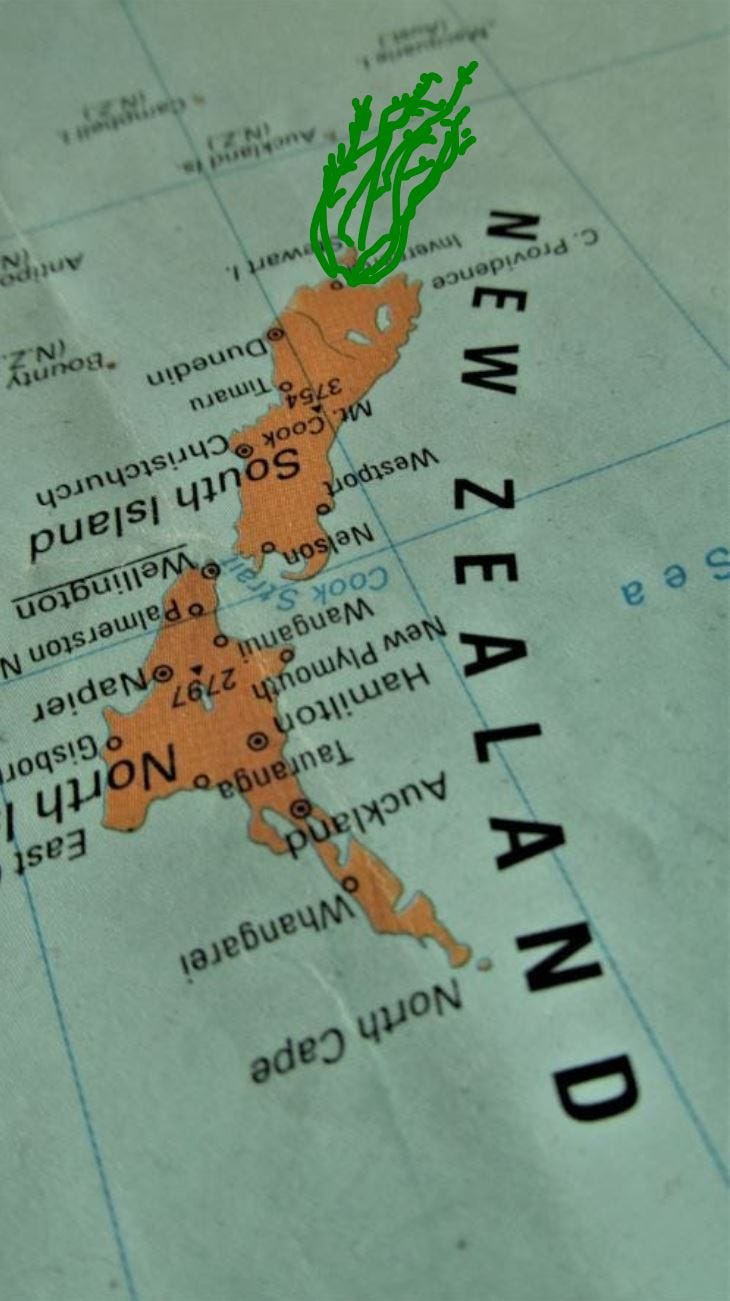
In other words, the social impact bond market has been developed by global banks, predatory philanthropies and captured governments to deploy technocratic social engineering, surveillance and sustainable management of poverty systems.
Yet, in all of the sugary policy solutions promoted by Pepsi National, Labour Cola and the other main fizzy drink parties, there is a key sacred cow issue that is never slayed.
» The Banking Racket, Managed Crises and Honorary Doctorates
Chris Luxon had said he is passionate about combating modern slavery. Yet, he doesn’t appear to have studied the structural racketeering practised by banking cartels.
Over time, the balance of power has shifted in favour of the central banks and the dynastic bankers calling the shots from the shadows, such that governments no longer possess or exercise the sovereign power to determine economic policies. This includes the loss or failure to produce debt-free currency to fund necessary public projects.
The dirty secret of banking is that banking industries across the world operate as market monopolizing cartels that maintain an artificial scarcity of cash. This problem existed long before electronic money, automated payments and crypto currencies.
By maintaining an artificial scarcity of cash and an abundance of privately manufactured credit, the cartelized banking industry coerces households, enterprises and governments into debt. It turns out that bank ‘loans’ are manufactured credit.
This scarcity compels families, businesses and governments to ‘borrow’ the bankers’ manufactured credit to build homes, enterprises or hospitals, respectively, and to compete for scarce cash to ‘repay’ the privately conjured credit. Each generation are cast as ‘borrowers’ who are compelled to sell their homes and businesses at ever higher values just to break even because of the ‘rent’ banks charge for their manufactured credit, as English economist Michael Rowbotham stated in his book, The Grip of Death: A Study of Modern Money, Debt Slavery and Destructive Economics.
The banking industry — which is dominated by transnational consortiums — maintains this structural scarcity over cash, with the active participation of the New Zealand Crown through the Reserve Bank and the Treasury. In other words, the Crown is actively involved in the supervision of a currency cartel that restrains trade through the restriction of supply of an critical resource: cash.

The debt-based currency is ‘borrowed into existence’ with the manufactured credit ‘loaned’ by global commercial banking consortiums to businesses, households and community organizations. Indeed, since mid-1984, the Reserve Bank — in collusion with the international banking cartel — have stealthily controlled the level of employment and unemployment by regulating the cost of wholesale credit accessible to banks for ‘loans’. The cost of credit on new and existing loans moderates economic activity, or business growth, and therefore the creation or destruction of jobs.
Because interest is the fee for supplying manufactured credit — rather than the ‘price of money’, as many humans cast as tax cattle believe — the banking industry’s windfall profits accumulated off the interest collected is extortionist. Since the interest is not created at the time when the ‘loan’ funds are borrowed into existence, an inflationary debt bubble competitive dynamic is set in train. Borrowers across whole nations are competing for money (whether paper cash, cheques or digital currency) to pay the loan installments, plus the interest, in addition to having put up a deposit up front.
Furthermore, since credit is manufactured, the value of the underlying properties that were the subject of the ‘loans’ is totally extracted by the end of debt repayments. Ergo, credit manufacturing is inflationary, because the bankers at the top of the pyramid have extracted cash off the masses of human monkeys, who are compelled to trade their businesses, goods and services, labor and homes at ever higher prices.
Therefore, a debt-based monetary system creates a ‘multiplier effect’ of ballooning credit bubbles, which the global banking cartel are able to exploit to gain the underlying collateral by applying their crony ‘boom-bust-bailout’ formula. In short, the debt-based monetary system that fuels capitalism is the key driver of incessant resource-plundering corporations, wars and debt-slavery.
Additionally, NZ’s behemoth banks, as well as the global banks, and asset management firms purchase the New Zealand Government’s securities and bonds with the complicity of the New Zealand Treasury. This debt-based monetary system keeps New Zealanders enslaved either as ‘taxpayers’, ‘consumers’ or as ‘borrowers’.
In other words, banking cartels operate a system of structural racketeering in cahoots with central banks, treasuries and the dynastic banking families. This hidden debt bondage game makes land scarce to as many ‘tax cattle’ as possible.
Indeed, New Zealand’s debt-based monetary system was first formalized during the New Zealand Masonic Revolutionary War (1860-72), with what was essentially a crony co-governance racketeering system between the Bank of New Zealand and the Colonial Government, at a time when the First Masonic Taranaki War had faltered. With Royal Charter backing, an Act of Parliament and capital from the Colony’s Oligarchy, the Bank of New Zealand quickly positioned itself as the Colonial Government’s banker to finance the escalation of the NZ Masonic Revolutionary War.
The Bank of New Zealand brokered finance of £3 million from the London and Sydney money markets to consolidate British Freemasonry’s takeover. With a chronic case of ‘terrible twos’, the BNZ also bankrolled the Colonial Government’s overdraft while war was waged on Māori in the Waikato, the Bay of Plenty, Taranaki and Whanganui. Vast swathes of land were confiscated in Māori territories where the Masonic Colonial and Imperial forces made war. In all, 1.3 million confiscated hectares became Masonic territories, and were used as collateral for loans raised to wage war during this period. However, development money for infrastructure was withheld from NZ until the colony was consolidated into districts and provinces under Masonic control.
Ergo, credit manufacturing, as a key mechanism of social control, has historic roots.

Naturally, New Zealand Herald’s business journalist Madison Reidy did not challenge the current Chairman of ANZ bank, (and NZ’s former PM) John Key, on the structural racketeering practised by the banking industry in cahoots with financial authorities.
Key mentioned the escalation in public debt borrowing that occurred while the Corona Tumble Weed turned NZ’s cities into ghost towns (without stating the matter so colorfully), was essentially on a national scale what his government did for Christchurch following the earthquakes of 4 September 2010 and 22 February 2011.
Between 2020 and 2021, the government gave cash handouts to businesses worth $20 billion. The Government did not do any audits to check if the cash went to workers, or was pocketed by big business, according to Aotearoa Liberation League.
In other words, where the Key Ministry managed a Christchurch Construction Cartel, the Ardern Regime managed a Corona Cartel for the Covidians to weather the storm.
Indeed, a Christchurch Earthquake Rebuild Nexus was operating as a cartel with the complicity of central and local government — as John McCrone found reporting for the Christchurch Press in September 2012), with his article “The Business of NZ Inc,” while Sarah Miles’ “Christchurch Fiasco” thesis, found the insurance industry exploit disasters to maximise profits. The data of the Christchurch Rebuild data, revealed that big corporate interests — foreign and domestic — worked hand-in-glove with central and local government as a hidden ‘brotherhood’ signalling their cooperation to collude by embedding the number 13 and its multiples in the rebuild meta-data.
The key Christchurch rebuild data reveals the ‘hand’ of the Old Boys’ Network whom codified their communications to signify solidarity, cue caution and gazette scape-goating rituals with the prime number — 13 — as game theory could predict.
By encoding ‘Thirteen’ and its multiples and variants into the key figures of rebuild projects, associated dates and economic data — New Zealand’s Old Boys’ Network were able to locate one another across public and private sector institutions, communicate the advancement of ‘the game’ and inflict a Shock Doctrine cartel business model with impunity, as my 2019 investigation “Codified Collusion by Christchurch Construction Cartel” revealed.
The game requires an implied threat, which amounts to defection on the next move if the other player does not post a hostage. Since game theory requires colluding players to issue and respond to threats and rewards to maintain the motivation, discipline and purposes of the cartel (or cartels), their simultaneous actions are political and also betray economic evidence of an unfolding plot. Collusion moves are hostage exchanges.
Once projects served their purpose of signaling solidarity by institutional players’ posting themselves as hostages to advance the game of collusion, the prime number 13 often dropped off the meta-data. This ‘drop-off’ was not a sign of defections, but rather was indicative of the Brotherhood getting on with the business of project completion with the real numbers. The deployment of Thirteen and its Accomplices acted as a carrier for the Brotherhood’s codified communications that were embedded with threats and promises, and signposted where colluding members of the Old Boy’s Network could be found. In other words, some of the published project meta-data were interim quanta deployed for the purposes of posting hostages to fortify the shifting power structures amid a crisis. Hostage exchanges stabilize relations.

What are the odds that the Christchurch Earthquake could inflict destruction with such precision that Christchurch City required exactly 13,000 new homes at a given point in time? What are the odds that Fletcher Building estimated a $13 billion bill to repair houses, reported 13,000 home repairs completed and claimed 13,000 more dwellings needed repair? What are the odds that Fletcher Building would also ‘induct’ 13,000 contractors for the Christchurch rebuild, thereby doubling the number of construction industry workers to 26,000? What are the chances that the Christchurch Earthquake’s destruction was so perfect that it resulted in Christchurch businesses gaining consents for 1.3 million square metres of business floor space at a particular point in time? What are the odds that the Christchurch Earthquake’s destructive forces were so precise that it would lead Fletcher Construction to boast 1.3 million square metres of roads had been constructed, despite Fulton Hogan reporting that road-laying taking up to 13 snail-pace weeks per kilometre?
How did the Canterbury Earthquakes and Aftershocks command such omniscient power that the destruction induced the EarthQuake Commission to pay out $1.3 billion in the first six months, and stump-up $13 billion to rebuild Christchurch’s commercial structures by August 2016? Likewise, how did the earth move AMI to double down on its insurance cover of $1.3 billion, and also shake the Medical Assurance Society to write off 13 commercial properties? How did the Christchurch Earthquake shove out approximately 13,000 poor people, and draw in 13,000 people to the wealthiest suburbs during the rebuild bonanza? And, how was it that the Christchurch Earthquake could be so precise that it cost the economy 13% of its Gross Domestic Product (GDP), a figure that was neatly compensated by Canterbury’s Gross Regional Product (GRP) of 13% of New Zealand’s total?
And how did GeoNet come to announce there had been 13,000 earthquakes and aftershocks; a fact that took on a life of its own when the figure was reported in multiple government, corporate and news reports long after that tally had passed?
This rebuild bonanza was the codified pledge of John Key when he posted himself as a ‘hostage’ by meeting with ACT Party candidate for Epsom, John Banks, in Urban Café, two weeks out from the 2011 election. Urban Café is located in the 4-storeyed Aurecon building, in Newmarket, Auckland. The global engineering firm — that was involved in the search, rescue, recovery and was ‘in the camp’ for rebuild projects of Christchurch City following the 22 February 2011 earthquake, had 13 of its staff on the Christchurch City Council’s post-earthquake Mayoral Flood Taskforce.
Even more intriguing, in the 3News report of this “Teapot Tape” event — as it quickly became known — political editor Duncan Garner made a point of saying that it lasted for exactly 13 minutes. Moreover, Garner enthused that the prime minister’s ‘sound-bite’ answer to 3News was precisely 13 seconds long. This was a curious observation that went unexplained by Mr Garner. Especially, since he was so close to the National Party, that he once gifted a young woman carpet burns in a Minister’s office in the Bolger Beehive, back when he was Parliamentary Press Gallery reporter for One Network News. The ‘carpet burn victim’ worked in National’s Research Unit.
Duncan Garner and Patrick Gower knew more than enough about the political machine behind John ‘Mr Nice Guy’ Key to know that once the Herald on Sunday reported they had a recording of the conversation between Key and Banks that had continued after the media were ejected from from the cafe. As I showed in my investigation, “Play Punch Journalism”, the Herald on Sunday, the New Zealand Herald and 3News together wittingly participated in the Teapot Tape cover-up. The Herald on Sunday omitted the tape’s damning part, where Key claimed to Banks that he didn’t run nasty political campaigns, and instead promoted the party’s policies to the electorate. Nicky Hager’s 2014 book, Dirty Politics, revealed Key was overseeing a two-track machine that outsourced attacks, while he acted as ‘Mr Nice Guy’. Key lied.
Herald on Sunday framed their ‘scoop’ as an ethical dilemma, and gave the last word to David Farrar, the National Party’s contracted opinion pollster. In this way, the Herald on Sunday trio of deputy editor Bryce Johns, political reporter Jonathan Milne and senior reporter David Fisher gifted Team Key a narrow damage control time window.
The reason 3 News’ Mr Garner and Mr Gower shared the 2012 Best News Reporter award, was because they essentially acted as ‘one voice’ to save John Key’s political career during the ‘Teapot Tape Scandal’ in the midst of the 2011 election campaign.
Therefore, when the scant details of the exclusive private dinner with Barack Obama — which included Luxon and Key — were ‘leaked’ to the protegé of Duncan Garner, Patrick Gower, it not only communicated the optics that Key was working his ‘networks’ to pave the way for Luxon. In a codified way, it signalled media capture.
At the end of 2017, Key was awarded an honorary Doctorate of Commerce during graduation ceremonies that began on December 13th with about 1300 graduating students from the University of Canterbury, where he earned an under-graduate Commerce Degree in 1983. In May 2022, Ardern was awarded an honorary Doctorate of Law by Harvard University. Thus, on Key’s watch, the Christchurch Construction Cartel bonanza boomed and therefore was an infliction of the Shock Doctrine with applied game theory for cartel members to signal their collusion. And on Ardern’s watch, a Corona Cartel benefited from the plethora of new laws. Two peas. Same pod.
To Reidy, Mr Key dismissed criticism over the use of foreign capital, and put it down to humans with a visceral aversion to foreign investors having stakes in NZ property, businesses and infrastructure. On news of BlackRock set to co-govern NZ’s Climate Infrastructure Fund, Key asked rhetorically ‘why do you care where the money comes from (for renewable energy projects)?’ Yet, Kiwis were aghast at the closure of the Marsden Point Refinery in 2022, that was unwisely sold by the Labour Government in the mid-1980s to Refining NZ; a co-governance consortium of oil companies.
Since 2007, New Zealand held 90 days worth of oil reserves in Australia, Japan and Europe. Despite NZ Government commissioning reports on the nations’ oil security in 2011/2012, the NZ Government did not increase domestic storage despite the supply vulnerabilities, and left the storage issue to oil companies. The premium oil produced at Taranaki is exported. Since the closure of Marsden Point, NZ has been importing refined oil with tankers arriving each week amid a ‘global supply chains crisis’, as a result of the Corona Hostage Crisis and Russia-Ukraine-NATO War.
Reidy did not venture into models for an abundance of debt-free cash, rather than an economy dominated by a monetary system controlled by callous bankers.
Instead of wasting time before the interview buying a birthday cake for Key, Reidy could have drawn upon a far more competent markets interviewer, Daniela Cambone.
For example, Cambone’s guest, G. Edward Griffin, said that across the world, all the major and significant powers are acting in unison to forge larger economic blocs bound together with digital transaction control grids for total control over humanity.
Mr Griffin is the author of The Creature from Jekyll Island: A Second Look at the Federal Reserve, who explained the Federal Reserve is a money cartel with a monopoly over the currency supply, setting interest rates and controlling America’s economic policy.
This theme is explored in the documentary, State of Control. US financial advisor Catherine Austin Fitts, spoke of the looming Central Bank Digital Currencies (CBDCs) system. Fitts, who worked for the federal government, said the CBDCs are intended to place central banks at the center of a financial transaction control grid.
Central banks are poised to program money as a means of social control, Fitts warned.
At the 2020 Annual General Meeting of the World Bank and International Monetary Fund, the General Manager of Bank for International Settlements (BIS) Agustín Carstens outlined key difference between cash and a central bank digital currency.
On 19th October 2020, the general manager of this ‘central bank of central banks’, said the key difference between the cash transactions and central bank digital currencies (CBDCs) is the loss of anonymity, the gaining of absolute control to determine what can be transacted by programming and the technological enforcement capacity.
Mr Carstens, of the Basel-based Bank for International Settlements, said:
“a key difference with the CBDC, is that the central bank will have absolute control on the rules and regulations that will determine the use or expression of central bank liability and also we will have the technology to enforce that. Those two issues are extremely important and that makes a huge difference with respect to what cash is.”
— Agustín Carstens, General Manager, Bank for International Settlements (BIS)
As I have shown in part 1 and part 2 of this Lux Luthor Redux series, the global banking cartel riffs of crises-past, like undead ghosts haunting Christmas.
In this stealthy way, the Bank for International Settlements’ virtual panel of central bankers was not only potent for the spectre of a dystopian future, since it took place via a ‘conference call’ while half the planet was under house arrest due to the engineered Great Corona Hostage Reset Crisis. This central bankers’ panel was also a portentous omen, since it took place on the 33rd anniversary of ‘Black Monday’ 1987, when the share market crashed in Gotham; Kong stalked Batman’s stomping ground.
In this ‘Bear Market’, the Dow Jones dropped 508 points, or 22% while the S&P 500 Index of the top 500 companies dropped 33%, from its prior high on August 25, 1987.
Curiously, the actual date of the reset to trigger the Great Corona Hostage Crisis was September 18th 2019, which was the 11th anniversary of the ‘Go to Congress Ritual’. On the evening of Thursday September 18 2008, three days after the staged collapse of Lehman Brothers, Treasury Secretary Henry Paulson and Federal Reserve Chairman Ben Bernanke met with congressional leaders to coerce them for $700 billion.
There is evidence of behind the scenes planning by the Financial Services Roundtable, a powerful lobby group for US finance, and that it likely had already written draft legislation for the infamous $700 billion bailout bill — as The Wall Street Journal reported in “Industry Lobbyists Go After Candidates” on September 19 2008. The financial authorities of the US and UK colluded with the global banks, like synchronized swimmers, to steer the Global Financial Crisis to a climatic point producing a fear-laden spectacle, to coerce their governments to bail-out the bankers.
To convey a sense of the extent of control, coordination and collusion exerted by the transnational banking cartel, let me illustrate how bankers ‘vote’ with markets.
On Monday September 29 2008, the House of Representatives voted down the bailout bill (205 votes for and 228 against). The voting session was broadcast live on television around the world and was keenly watched on the trading floors of stock and commodities exchanges and major financial firms. Stock markets worldwide began to fall as it was clear the bailout was going to be rejected; then they plunged. The global banking cartel voted with their computing software.
American workers’ 401(k) savings and investment plans were heavily invested in shares measured by the Dow Jones Industrial Stock Index, which dropped 777 points.
Eleven years later, on September 18th 2019, in Gotham City, the New York Federal Reserve Bank announced it would bail-out the Repo inter-bank market, which supplies overnight financing between banks to fund firms’ payments for payroll, bills and purchases. This ‘rescue’ with newly-conjured tax-backed Federal credit, occurred because global bank, JP Morgan Chase, had pulled $130 billion — a multiple of 13 — out of the Repo Market between late August and mid-September 2019.
In its 2018 annual report, JP Morgan Chase marked its central role in escalating the Global Financial Crisis toward public insurance pay-outs or bail-outs, with an anniversary brag-piece titled, “10 Years After The Financial Crisis.” Crucially, Jamie Dimon stated it was time to “open up the rule book” because banking regulations imposed after the Global Financial Crisis (GFC) and Global Bank Bail-outs (GBB) had evidently hurt the U.S. economy — as RepoWatch observed. Those tightened banking regulations had occurred as a result of widespread backlash to the bailouts, since the Global Financial Crisis was of Wall Street’s own making.
Ergo, this bankers’ Great Reset preceded the Corona Hysteria Crisis, and therefore, the ‘Vision for the Future’ panel signaled both a threat to inflict a controlled crash, and the promise: the banking fraternity can ‘cooperate’ to forge a ‘totalitarian utopia’.

Although it can seem like that such date alignments might appear to be mere coincidence, let me recruit an example from my ground-breaking thesis, “It’s the Financial Oligarchy, Stupid”, in which I demonstrated metaphor-laden events proving that the financial authorities colluded with the banks of London and Gotham.
On the US side of the Atlantic, then-Treasury official Neel Kashkari presented his symbolically titled, “Break the Glass: Bank Recapitalization Plan” in a secret meeting at the Federal Reserve’s headquarters in Washington D.C. This meeting occurred on a potently symbolic date, April 15th, or the income tax filing deadline; this signalled who was going to be on the hook to pay the bail-out bill: American taxpayers.
As the title of the ‘Break the Glass’ blueprint suggested, this Bank Recapitalization Plan for a massive tax-payer funded bailout from Congress was intended to be shelved and only used in the event that the FIRE sector (Finance, Insurance, Real Estate) needed to be ‘rescued’. Ergo, after the ‘arsonists’ hunker down on the 13th Floor of the New York Federal Reserve at 33 Liberty Street to finalize ‘torching’ Lehman Brothers.
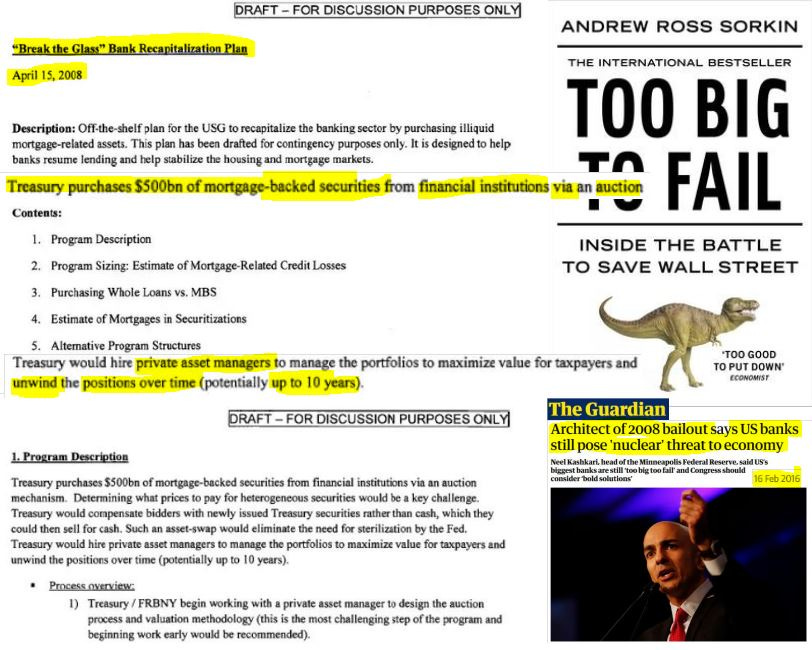
Kashkari conspired with the other officials present — including the Chairman of the Federal Reserve, Ben Bernanke, and the Secretary of Treasury, Henry Paulson.
On April 15th 2008 at the Federal Reserve HQ in Washington D.C., Kashkari said:
“I think we all understand the calculus here, the limits of what we can legally do. How do you get the authority to prevent a collapse?” Thus, the plan was to advance the Global Financial Crisis so that the U.S. Congress would believe they had no choice but to authorize emergency public insurance payouts, or bailouts, for Wall Street.
Precisely five Gotham moons later, on September 15th all hell broke loose when panic news spread virally like a contagion through the global news-chain that the New York Fed would not bailout Wall Street’s fourth largest investment bank, Lehman Brothers.
During those four days, $400 billion in funds exited Gotham’s Repo Market.
As many ex-Wall Street bankers, economists and financial analysts stated during the bail-outs and in the years after-ward, that government support for the financial-political oligarchy had merely parlayed the current crisis for a bigger one because the ‘bailouts’ are, of themselves, another bubble, which will eventually create ‘a day of reckoning.’ Indeed, the causes of the Global Financial Crisis were not addressed.
In State of Control, Fitts said power has shifted over the course of the 20th Century from governments to central banks. After the Crash of 1929, the BIS was formed in 1930 to be a mechanism for Germany to continue paying war reparations for World War I. However, the Basel-based private Central Bank, which is owned by the major central banks, was established to be a conduit to build up the German War Machine, and to control finance and settle transactions that would circumvent allegiances to their respective nation states, and to crisis manage a permanent war economy.
The Bank for International Settlements was created with its own sovereign immunity, such that the Bank’s property and assets and deposits, wherever located and by whomsoever held, cannot be seized, frozen or subject to any other measure of execution, enforcement or sequestration in any criminal case. Only in civil or commercial cases may property or assets be subject to such execution at the final judgement of a court, or if such immunity is formally waived in individual cases by the BIS itself. All deposits, shares and claims against the Bank are immune in all the time.
The ruse on the world gets worse. Through this cartel system, not only can the Global Oligarchy influence strategies, monitor rivals and enforce tacit agreements that would not be legally enforceable via courts or legislation. As a money cartel with a monopoly over the currency supply, the central bank pyramid maintains a scarcity of cash and an abundance of credit, sets interest rates, and controls nation’s economic policy — while Tax Cattle unwittingly pay income tax to service the interest on the public debt.
Ergo, over time, governments lost sovereign power across the world to the dynastic banking families and the subservient central banks who have financed wars, inflicted financial crises and economic warfare to accumulate wealth, power and control.
To sum up this sub-section, National’s proposed Social Investment Fund is an oligarchic preferred ‘solution’ to sustainably manage poverty, tokenize technology treadmill training and coerce behaviorial modifications, as well as incentivize recruitment for access to health services with ‘carrot’ bonuses. The intended eventual social impact bond market is a ‘logical’ broad techno-feudalist ‘mechanism’ to corrall increasingly larger pools of Kiwis as monkeys onto the technocratic blockchain.
Ironically, the social impact bond market, has not only been piloted by Crown entities and has been trialed elsewhere. Impact bonds have also been developed by global banks — such as Goldman Sachs, Merrill Lynch, Morgan Stanley, Bank of America, and JP Morgan Chase — who were among the culprits that caused the Global Financial Crisis of 2007-2008. Moreover, the transnational banking cartel, which is also comprised of central banks, have signaled their chess moves assume absolute control over pools of people with programmable money the other side of a crash.
‘Milk and toast’ newsrooms avoid slaying this sacred cow issue: credit manufacturing.
Mr Luxon’s apparent oblivion about the structural racketeering practised by banking cartels is odd given that he holidays on Waiheke with Mr Key, the former London and Gotham banker. Key has claimed Luxon sucks at fishing.
Ironically, NZ’s ‘milk and toast’ variety journalists suck at pointing out that because three newsrooms participated in covering-up the real contents of the Teapot Tape recording and Key’s dirty political attack machine a fortnight prior to the 2011 election — Luxon would not be where he is today. Key would not only have been ‘gone by lunchtime’ the day after losing the 2011 election. The Codified Cartel Collusion in the Christchurch rebuild bonanza would’ve been trickier. And the January 2012 Kim Dotcom/Megaupload Raids would’ve been scuttled by a new Labour-led Government, since the backlash over the Clark-era Operation Eight Raids of 2007 was still a recent memory. Therefore, the case against Tame Iti in February 2012 over the Operation Eight/Urewera Raids would’ve been dropped. And the GCSB spy bill of 2013 would not have been passed. And, so the pattern of the national security state consolidating power with each machination, would also have been broken — amid the sunlight.
It’s the Third Hundred Years’ War, Stupid
With the foregoing appraisal of the pyramidal monetary concentration of power that has been accumulated through subversion, the theater of politics becomes obvious.
The political postures performed by New Zealand’s placeholder prime minister, Chris Hipkins (who replaced Jacinda Ardern in early February of 2023), and National’s leader Chris Luxon, essentially portray what school children are indoctrinated to believe.
The theater conveys the idea that governments in liberal democracies decide policies.
But, as I have shown in part 1 “Operation Overwealth”, and part 2 “High Flyers Club”, as well in this part “Monopoly Board” of my “Lux LuthorRedux” series, there is a pyramidal structure that forms, shapes and distributes policies downward from the executive level comprise of the planet’s Overlords. Politics is 2D-chess theatrics.
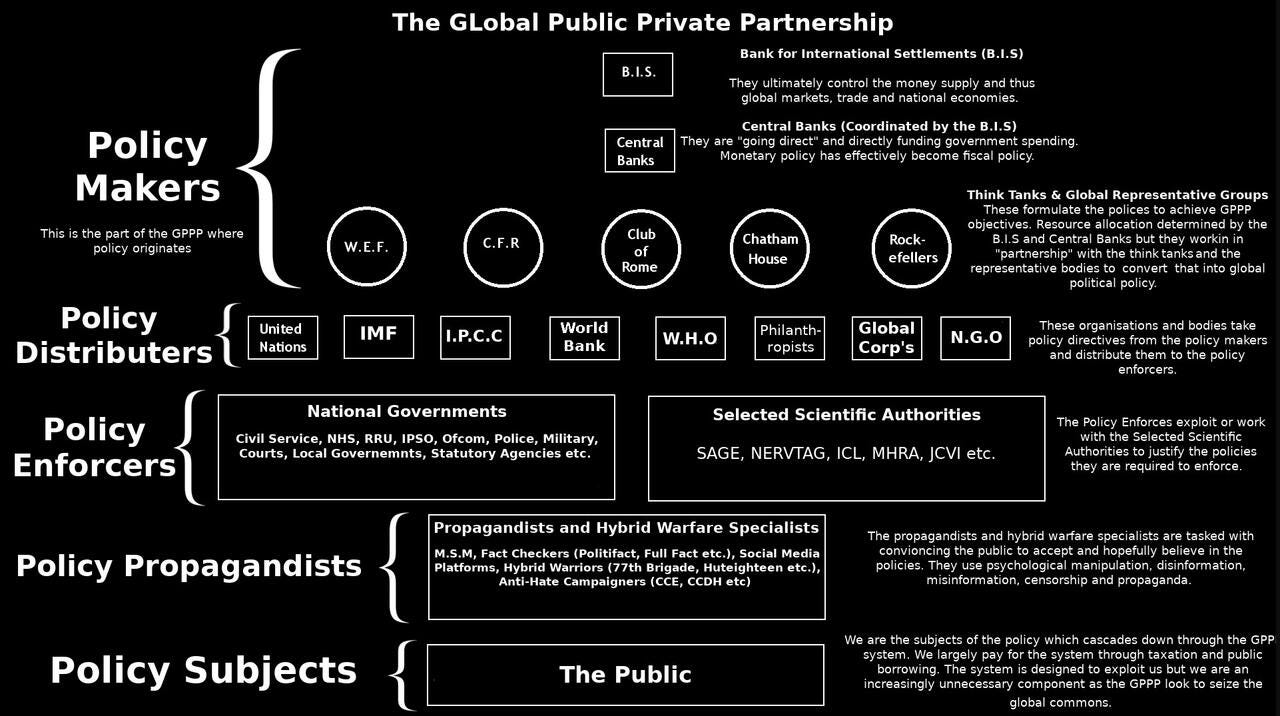
Presently, the world’s three major powers — America, China and Russia — are re-forging their empires in a great game of 3D geo-political chess. The objective of 3D geo-political chess is to win control over the entire game board, by orchestrating the conflicts on the 2D chess board of nation state jurisdictions, ‘run’ by political leaders.
Typically, the 2D chess board conflicts are designed to distract, divide and defeat humanity. The battles to over resources — including land, dominant institutions and strategic technologies — underpin the structural forces that both bind civilizations and have the potential to free humanity.

The critical structural forces include technological innovations, human cultural patterns, changes in demographics, and the struggles, tensions and impacts of organizing systems to determine whether access to the world’s valued resources is restricted or open. Thus, epic ‘chess games’ are inflicted to re-set the arc of history.
Historian Carroll Quigley’s civilization model showed every civilization needs an instrument of expansion. In dusty antiquity, the primary instrument of expansion was slavery, with horrendous hours mining metals for shiny coins, ostentatious bling and skin slicing swords. The medieval knight became the surplus-creating instrument of expansion in Europe’s system of feudalism, which was an organizing pattern of agricultural units known as manors that were worked by the peasant class or serfs to provide food for the knights, their horses and the rest of the upper class hierarchy of landlords, the monarch and the pope. Feudalism became an institutional system when it was created around 970 A.D. and this lasted until 1270 A.D.
During the Columbian Era of Colonial Empires from 1500 to 1900, the credit revolution rose as the primary instrument of expansion to usurp feudalism’s serf-slavery and fund wage-labour and the rise of the machines as instruments of expansion. This era ended with the beginning of the Third Hundred Years’ War.
A Hundred Years’ War occurs when there are tectonic shifts in the world system, brought about by scientific discoveries, technological innovations, and new organizational hierarchies that competing ruling classes fight over to dominate the trajectory of structural forces. In doing so, the West’s oligarchies, or coalitions of the super-rich, have been very successful at harnessing an Age of Conflict as a means to enter a new Age of Expansion by periodically moving the centre of operations from the Empire’s core to a peripheral state. In short, the West’s Rulers have staved off total collapse by invading the territories of other Empires.
This present epic age of conflict began as a fight over the control of gold and diamonds in Southern Africa with the Boer War of 1899-1902, in order to fill a war chest for the new prize, oil. In 1880, Germany had surpassed Britain as an industrial power, and in the 1890s began moves to plan, invest and build the Berlin to Baghdad Railway to transport oil. In response, a British Secret Élite envisaged a diabolical double-global war strategy in an attempt to forge a universal empire.
The British Secret Élite embroiled Europe in war against Germany in order to smash the Russian Empire, since the British Oligarchy feared an alliance between Germany and Russia would led to the Russia Empire dominating the world.
At the beginning of ‘Act II’ — a ‘Grid’ of international bankers entered a secret pact to forge and conduct a Second Global War, as Guido Preparata recounts in his masterful book, Conjuring Hitler: How Britain and America Made the Third Reich. The Grid’s objective sought “nothing less than to create a world system of financial control, in private hands, able to dominate the political systems of each country and the economy of the world as a whole”, as Carroll Quigley wrote in his 1966 tome, Tragedy and Hope.
Where the credit revolution rose as the primary instrument of expansion from 1500AD to 1900AD, to finance colonial expansion, industrialism and the cartelization of commerce, it is now the chip revolution that is collectivizing all other instruments of expansion, including oil. And that explains why all options for infrastructure, including transport, as well as security, health, education, housing, and even work across all public and private sectors — are mediated by the computing chip.
This accelerated pivot to computer chip-mediated processes, transactions and relationships occurs at a time when central banks seek to introduce privacy-destroying central bank digital currencies as a new mechanism of social control.
It is my contention that this epic ongoing global war now seeks to destroy household autonomy, wreck free enterprise and construct a totalitarian universal empire through domination of the Chip Revolution, which began in 1959.
In short, the computing chip is the new instrument of expansion in the ongoing Third Hundred Years’ War that began as a struggle over the control of oil in 1899.
Conclusions to Monopoly Board
In this “Monopoly Board” installment of the Lux Luthor series, I have shown how National Party’s stealthy social engineering agenda to manage the convergent crises
are consistent with an applied game theory plan to ‘solve’ problems ultimately caused by the planet’s Overlords and their professionals, so that they can remain in control.
Yet, most New Zealanders have not heard of social impact bonds, and therefore have no comprehension about how an impact bond market is being developed in stealth.
Luxon avoids polling push-back by ‘Newspeaking’ his noun words. Similarly, this sly tactic was used by power companies to roll out SMART meters, by mailing vague letters advising of a ‘technology upgrade’, lest Kiwis google-thumbed ‘SMART meters’.
Given that social impact bonds have been developed by several undead global banks culpable for causing the Global Financial Crisis of 2007 and 2008, I believe New Zealanders would be skeptical about such ‘solutions’ and smell a whiff of racketeering.
Mr Luxon’s apparent oblivion about the structural racketeering practised by banking cartels is odd given that he holidays on Waiheke with Mr Key — the former London and Gotham banker — who was awarded an honorary doctorate from Canterbury University. The doctorate in economics followed Key’s tenor as Chief Minister of New Zealand, during which he ‘managed crises’ by deflecting attention to a perennial flag change debate. On Key’s watch, the Christchurch Construction Cartel enjoyed a bonanza after successfully signalling their application of game theory by deploying the recidivist number 13 and its variants in key metadata of the rebuild.
Key telegraphed this rebuild bonanza with the codified pledge of meeting with the ACT Party’s Epsom candidate, John Banks, in Urban Café — located in the 4-storeyed Aurecon building — two weeks out from the 2011 election. Because the global engineering firm was ‘in the camp’ for of Christchurch rebuild following the 2011 earthquake, and already had 13 of its staff on the Christchurch City Council’s Mayoral Flood Taskforce, Key’s chess play said, ‘cartel cronyism is only with National and Act’.
Duncan Garner signaled he detected the subtext when he emphasized Key and Banks sat down for 13 minutes and that Key’s soundbite for 3News was 13 seconds duration. Therefore, the fact that Garner and his deputy political editor, Gower, shared the 2012 Best News Reporter award — for saving Key’s political career — shows cronyism.
Gower’s references to the recidivist prime number 13 in his hosting of Newshub’s Leaders’ Debate between Chris Luxon and Chris Hipkins demonstrates applied game theory to communicate unity, caution and plutocratic political marriage procurement. Thus, Gower also signalled that Newshub is part of the ruling Establishment’s ‘club’.
Therefore, Luxon’s high octane propulsion to the leadership of the National Party with instrumental help — both publicly and privately from John Key — demonstrates it would not have happened if Gower and Garner had exposed the dirty politics scandal in 2011. But, that would have required them to betray their own close connections to National, especially Gower (despite his neutral posture).
With this theatrical subtext revealed, it is no small wonder that the political debates, interviews and news stories about Luxon, National and the other competing parties polling at 5% and above, are restricted to tightly curated questions, facts and ideas.
The tight restriction means that the looming Central Bank Digital Currencies (CBDCs), including the Reserve Bank’s project — remains one of the ‘elephants in the election debate room’. Likewise, with all the debate about government expenditure, public debt and rising living costs, including interest rates, the debt-based monetary system remains a sacred cow issue. Ironically, the news media — who market themselves as vanguards of free speech — are facilitating the corralling of Kiwis into digital pens, by failing to call-out the accumulation of power of banking fraternity.
The spooky specter of a digital panopticon prison — in which transactions become mediated by algorithms policing carbon-equivalence consumption, social credit scores and bio-health data — is either not on Kiwis’ radars, or is just a ‘conspiracy theory’, or an unlikely scenario that won’t happen since sincere leaders run the planet.
Yet, the computing chip, IT technologies and technocratic systems are the new instrument of empire expansion, that are accelerating the collectivization of all previous instruments of expansion. The previous instruments of expansion that facilitated empires to grow, include slavery, feudalism, and credit creation. The tectonic shifts in the ongoing Third Hundred Years’ War — that began as a struggle over the control of oil in 1899 — are now focussed on a contest to control the territories, treasures and technologies to dominate the chip revolution.
This chip revolution underpins the emergent techno-feudalist world system, and is the real reason why the Great Corona Hostage Crisis Reset occurred. In the epic ‘chess games’ to re-set the arc of history, the intention is to steer our species into new technocratic systems, with new behaviours and technology updates — with each crisis. This trajectory requires rounds of ‘Whack-O-Mole’ to be inflicted on humanity, by the planet’s Overlords and their élite servants, including Luxon and Hipkins et al.
Indeed, in 2020, a central banker explained at an annual meeting of the IMF-World Bank, the key advantage that CBDC’s had over cash was the capacity to have absolute control over how people used money since the digital currency would be programmable. This virtual meeting took place on the 33rd anniversary of the 1987 Wall Street Crash. The totalitarian ‘solution’ to the next crash was signaled.
Steve ‘Snoopman’ Edwards is a dissident journalist, who worked at indigenous broadcaster, Māori Television, for 14 years as an editor of news, current affairs and general programmes. His first job, as ‘Snoopboy’, was delivering the Auckland Star.

